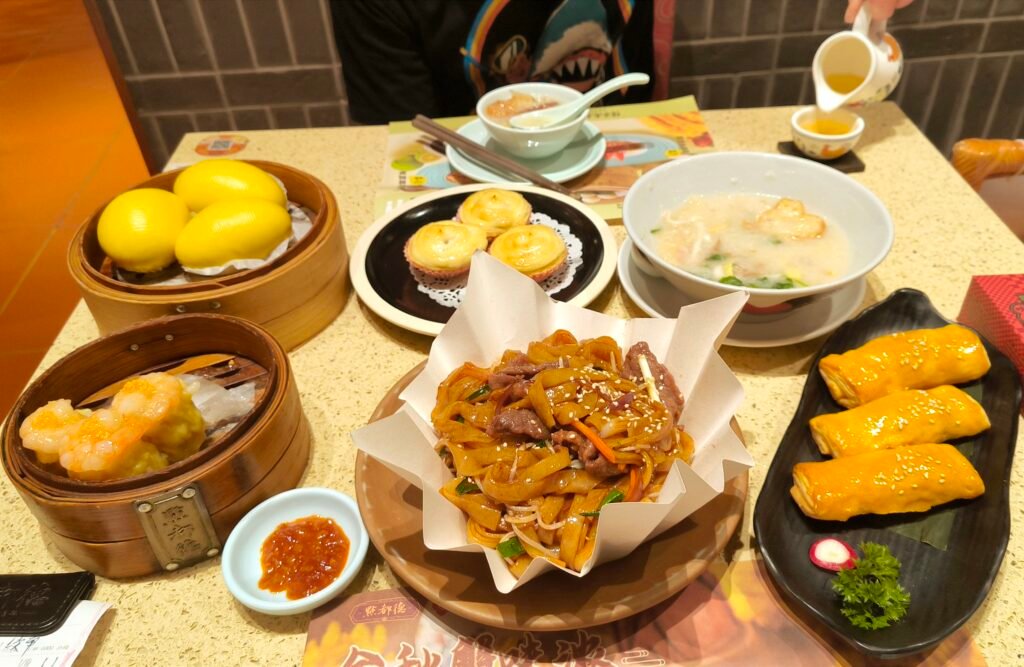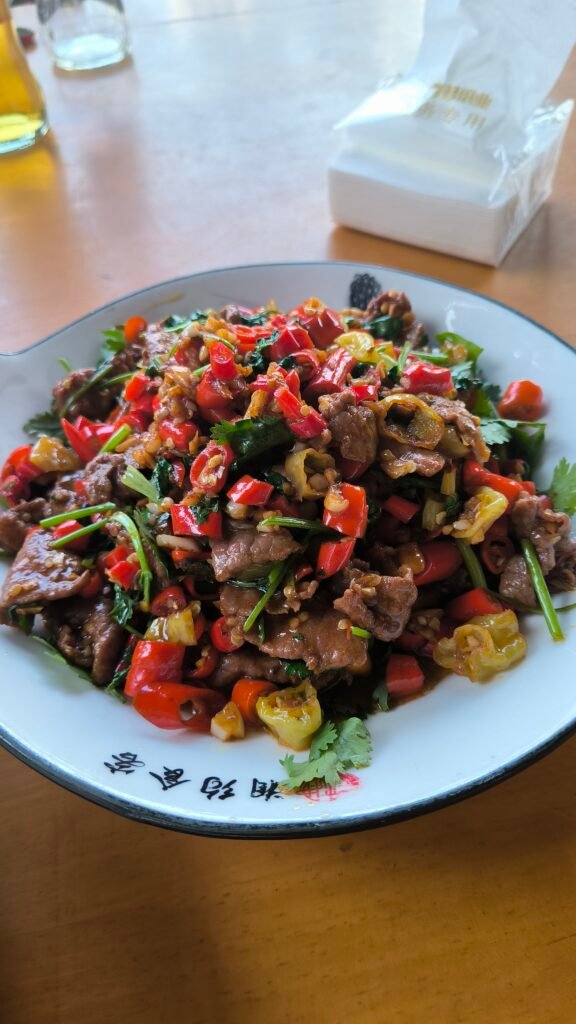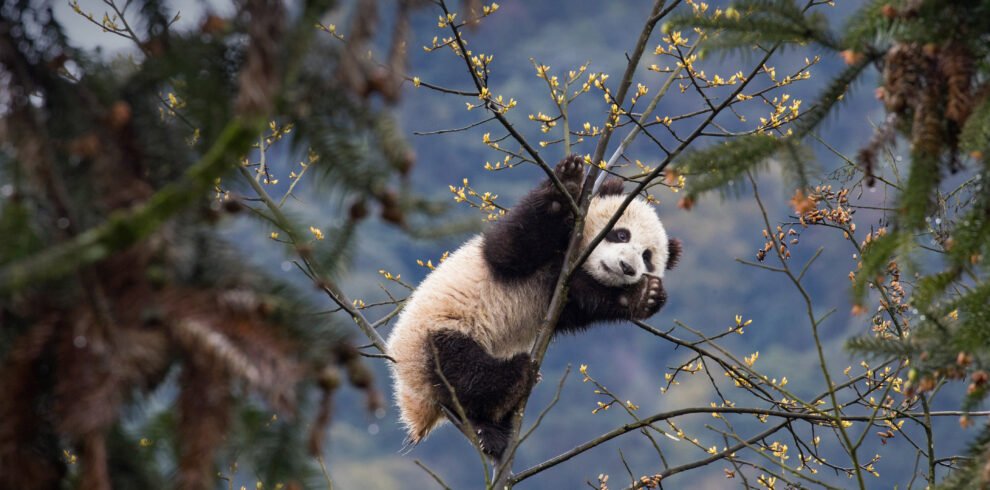Unpacking Chinese Food Beyond the Familiar Favorites
We all love orange chicken, crab rangoon, General Tso’s chicken and beef and broccoli. I’m not here to tell you to stop enjoying these dishes or to call you uncultured for eating what some people might call ‘inauthentic’ Chinese food. This blog is to help people understand that the food in China is likely far more diverse and delicious than anything you’ve ever tasted before.
Why is Chinese food in America so different from the real McCoy?
Chinese immigrants started settling in the American West in the 19th century. When they couldn’t find their beloved Chinese ingredients, they made do with what they could find and created their own cuisine. Before Americans got wise to the flavours, the foods were eaten by the Chinese immigrants themselves. So, American Chinese food is a distinct cuisine with its own history.
My grandparents ate Chinese food, but they didn’t eat much else – especially not tacos or pizza, which only became mainstream in America after soldiers returned from Italy after WWII. As it stands, most Chinese restaurants in the US are still owned and run by Chinese people. Any isolated population will eventually develop its own characteristics. So, there’s no shame in eating orange chicken or some crab rangoons, but there’s so much more out there.
Common Misconceptions About Chinese Food
Limited Perception of Chinese Cuisine
In the West, Chinese cuisine is often synonymous with takeout boxes and sweet, heavily fried, or saucy dishes. In fact, China’s cuisine is outrageously diverse, offering loads of options that you would probably never associate with China.
Regional Diversity in Chinese Cuisine
Overview of Regional Cuisines

China’s got a huge geography, a long history and lots of different cultures, which has led to a huge variety of regional cuisines, each with their own distinctive flavours and specialities. China has been developing at a fast pace since 1949. Before that, each region wasn’t as well connected, so there wasn’t much mingling of the various provinces’ unique cuisines until relatively recently. Today, they still retain their own unique characteristics. Let’s check out some of China’s most famous regional cuisines.
Sichuan Cuisine
First up, Sichuan province, known for bold, spicy flavors. Sichuan cuisine is famous for dishes like Kung Pao Chicken, a stir-fry of chicken, peanuts, and vegetables, perfectly balanced with spicy, sweet, and tangy flavors. Sichuan peppercorns, with their unique numbing sensation, add an unforgettable twist to many dishes.

Cantonese Cuisine

Next, let’s head south to Guangdong province, home of Cantonese cuisine, which emphasizes freshness and subtle flavors. Walking into a bustling dim sum teahouse in Guangzhou, you might try Har Gow (shrimp dumplings), Char Siu Bao (barbecue pork buns), or 流沙包 (egg custard buns, aka the best food ever). Cantonese Roast Duck, with its crispy skin and succulent meat, is another must-try. It’s Dim Sum nirvana—affordable and delicious.
Hunan Cuisine
In Hunan province, the food is fiery. Very very fiery–We’re talking a level of spice you might have only experienced chugging hot sauce on a dare. Hunan Peppery Chicken, with its vibrant mix of fresh chilies and garlic, makes for a burning and exhilarating dining experience. Try eating stinky tofu, another local favourite despite its rather pungent aroma. Hunan food is probably spicier than you think, with lots of fresh chillies in the dishes, so you really have to dig to find the meat. You might want to wear a mask when someone is cooking a Hunan dish nearby because of the intense chili fumes.

Xinjiang Cuisine

Finally, let’s talk Xinjiang. In China’s far northwest, you’ll find hearty, flavorful food, including dishes like lamb kebabs, skewers of marinated lamb grilled over open flames, and hand-pulled noodles served with various savory toppings. The food here is a unique blend of Chinese and Central Asian culinary traditions, which is quite different from what you might think of as Chinese food in the West.
Unique Ingredients and Cooking Techniques
Variety of Ingredients
Chinese cooking uses a wide range of ingredients, from exotic spices to fresh vegetables and unique proteins. Walking through a bustling market in Chengdu, you’ll see everything from Sichuan peppercorns to fermented black beans. These specialty ingredients give Chinese dishes their distinctive flavors and aromas.

Cooking Methods
Traditional Chinese cooking techniques include steaming, stir-frying, braising, and roasting, each bringing out different flavors and textures. Steaming preserves the natural flavors and nutrients of ingredients, while stir-frying creates quick, flavorful dishes with a crispy texture. Braising develops deep, rich flavors, and roasting adds a delicious, smoky finish to meats.
Food as Medicine
The way Chinese people think about food is more sophisticated, akin to medicine. Different foods have different energies; some are hot and create heat in the body, while others are cold and have a cooling effect. This yin and yang balance is integral to Chinese culinary philosophy.
Conclusion
Exploring the true diversity of Chinese cuisine reveals a world of flavors and traditions far beyond the takeout boxes and sweet, saucy dishes many are familiar with. From the bold spices of Sichuan to the fresh flavors of Cantonese dim sum, the fiery dishes of Hunan, and the hearty meals of Xinjiang, Chinese cuisine offers a rich tapestry of tastes and culinary techniques. So, next time you enjoy your favorite Chinese dish, remember there’s so much more out there waiting to be discovered.
Learn more about Chinese Food with us
Why Choose This Tour? Explore Xi'an most famous landmarks while embracing the elegance of traditional Chinese attire. This tour blends…
Why Choose This Tour? Explore Beijing’s most famous landmarks while embracing the elegance of traditional Chinese attire. This tour blends…
Experience the perfect blend of Chinese culture and spiritual serenity on this exclusive 3-day retreat to Wutai Mountain. Immerse yourself…
Why Choose This Tour? Exclusive Culinary Experience: Indulge in Yunnan’s famed “crossing-the-bridge rice noodles,” explore bustling food markets, and savor…












[…] Xi’an is a treasure trove of culinary delights, from its famed noodle dishes to unique street snacks. With this guide, you’re all set to explore and savor the authentic flavors of Xi’an. Enjoy your culinary adventure with China Explorer Tour, where every meal is a journey into the heart of Chinese food culture! To learn more about Chinese food, check out Discovering the True Diversity of Chinese Food – China Explorer Tour […]
My spouse and I absolutely love your blog and find many of your post’s to be just what I’m looking for. can you offer guest writers to write content for yourself? I wouldn’t mind creating a post or elaborating on many of the subjects you write about here. Again, awesome blog!